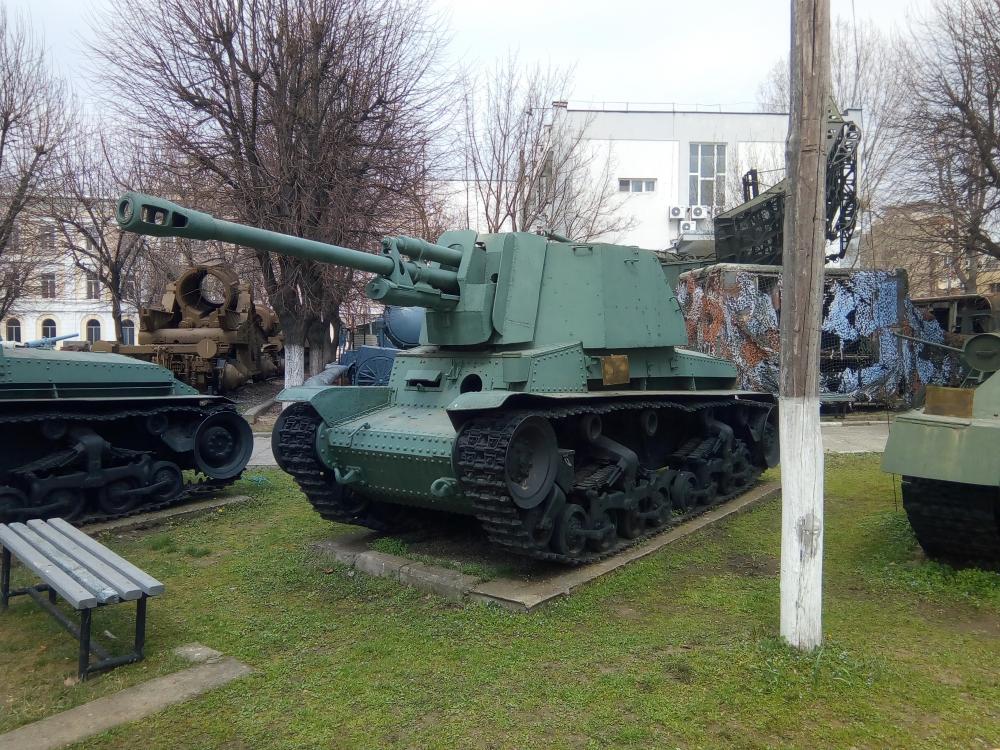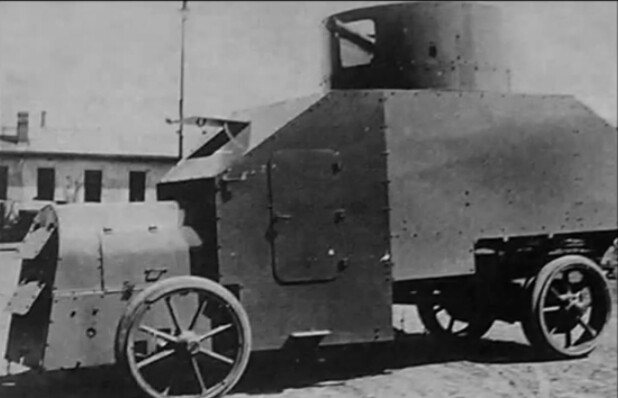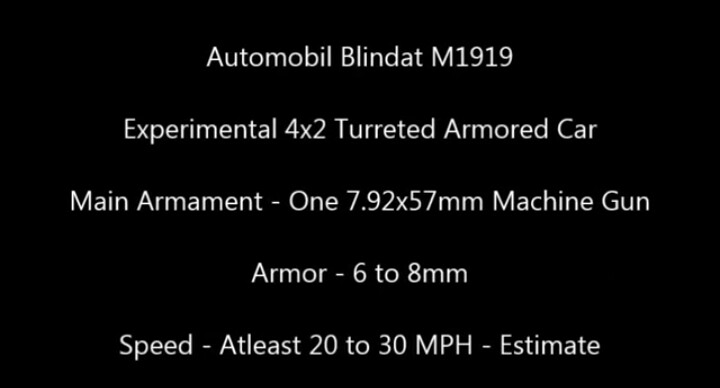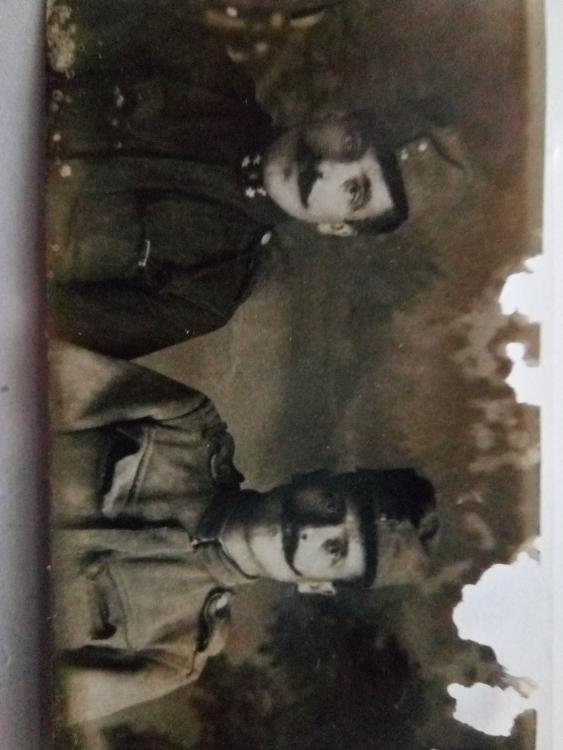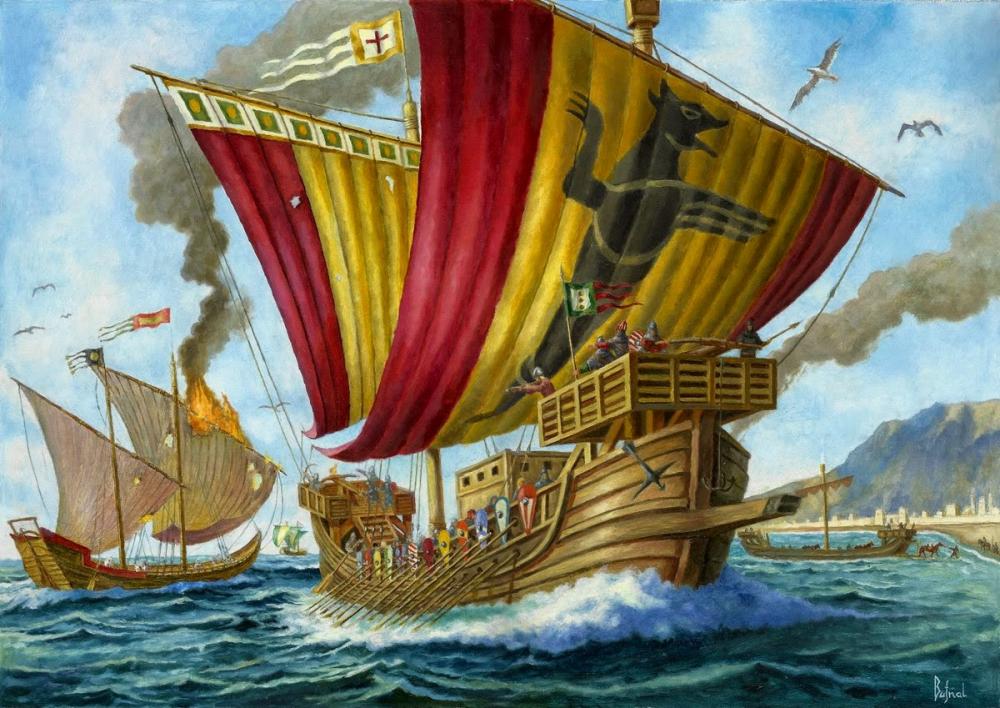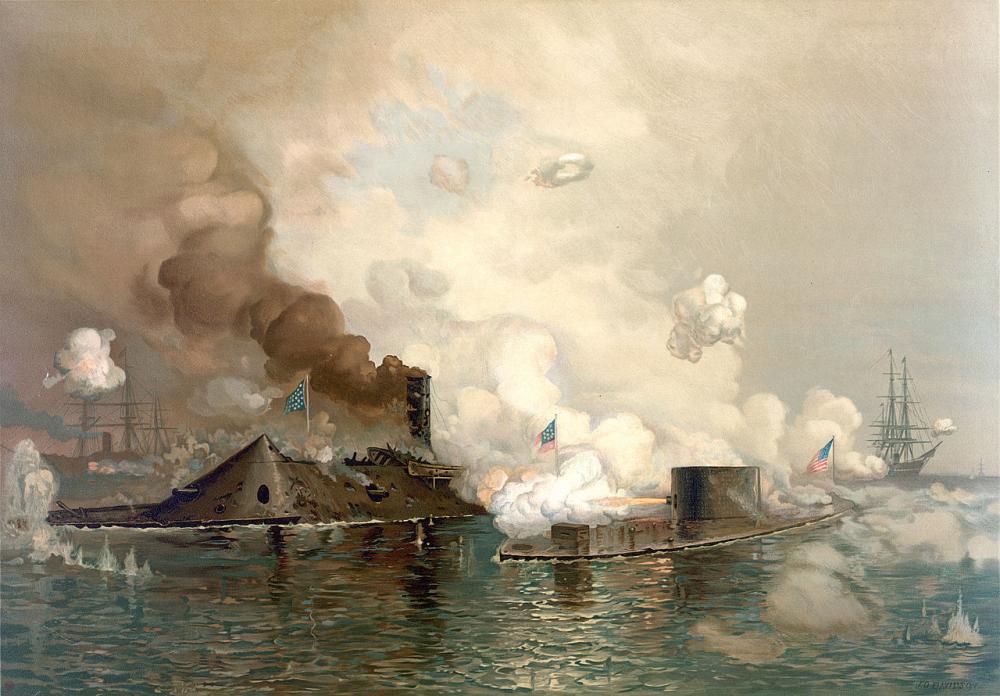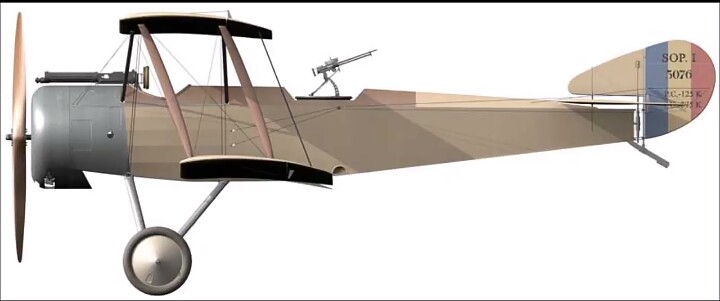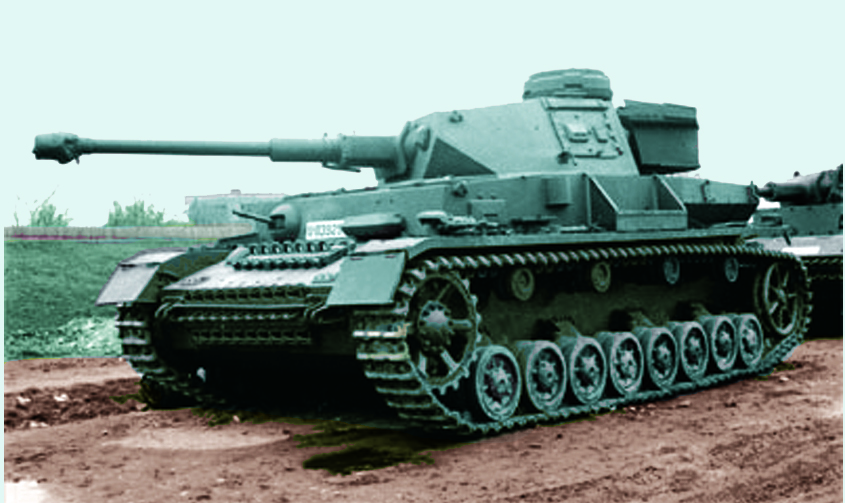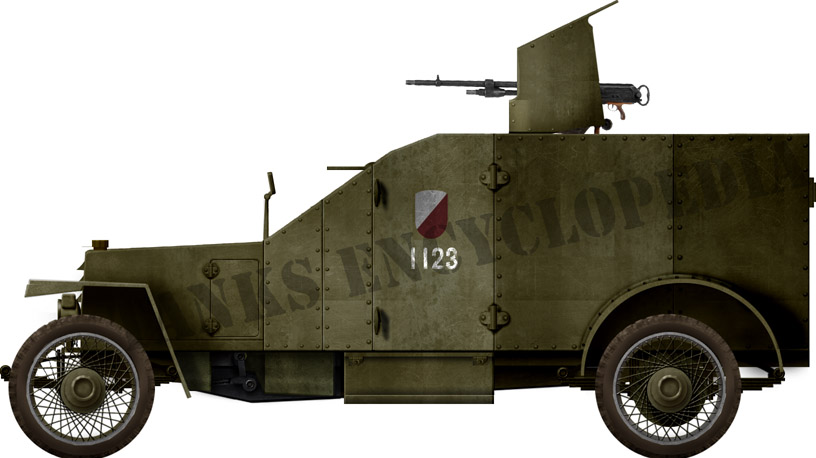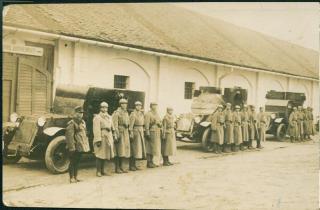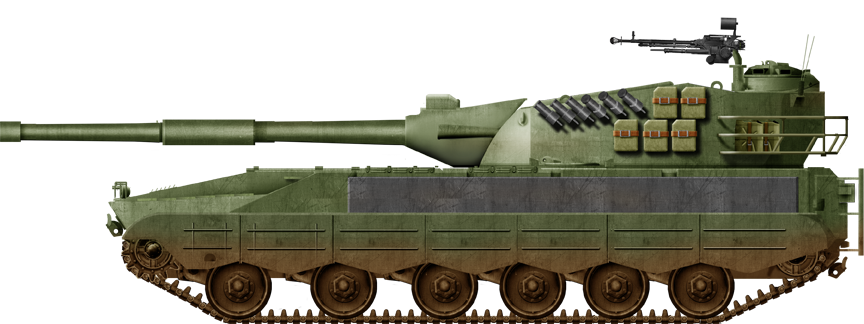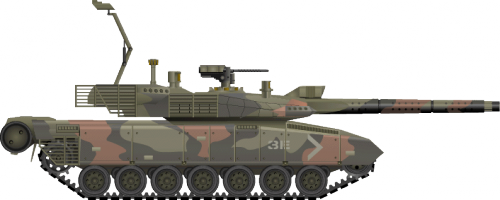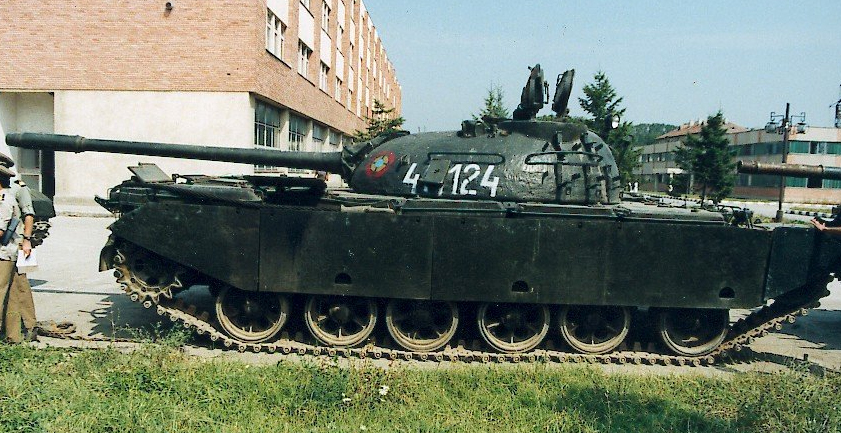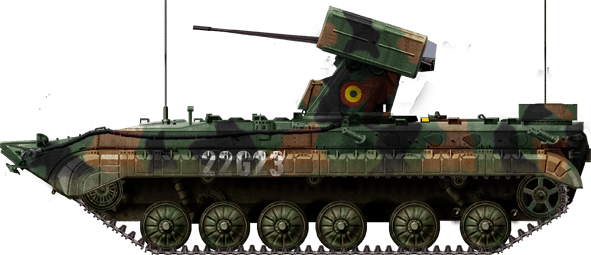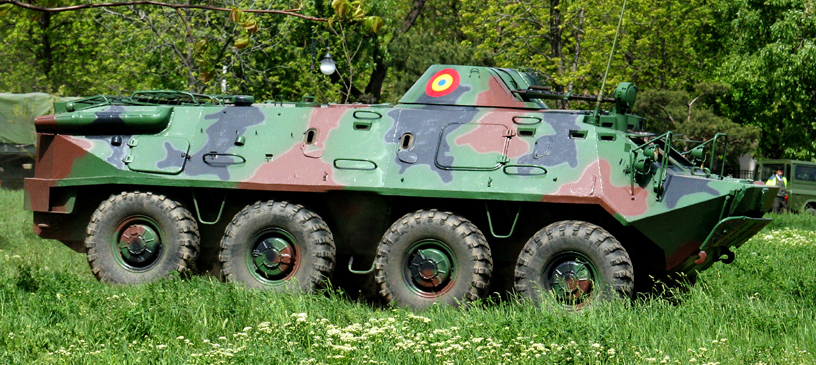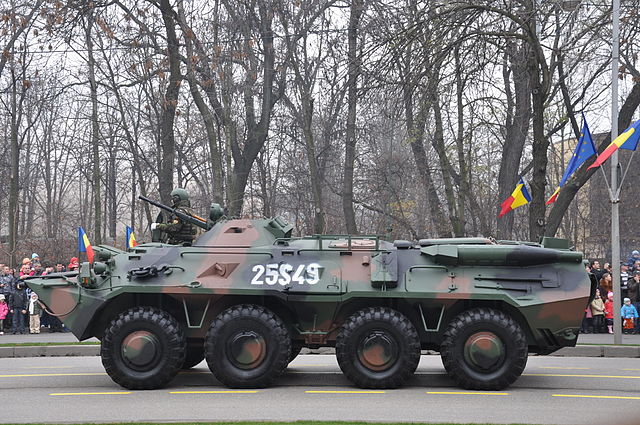
Morar Andrei
Active Contributor-
Posts
264 -
Joined
-
Last visited
Content Type
Profiles
Forums
Blogs
Gallery
Events
Store
Everything posted by Morar Andrei
-
Warships evolution - I'm confused
Morar Andrei replied to Morar Andrei's topic in Armour, Vehicles, Ships & Aircraft
Yeah, I heard stories about ironclads fighting each other not being able to penetrate the armour of the enemy because the armament of the ships was not powerful enaugh. -
The Romanian 2nd Army's success at Marasti forced the Central Powers to revise their plans. The offensive planned in the Namoloasa area was abandoned and the bulk of the forces were moved in the Focsani area. The new offensive was going to be launched west of the Siret River, on the Focsani – Marasesti – Adjud direction, with the German 9th Army (general Johannes von Eben) and on the Oituz Valley with the Austro-Hungarian 1st Army (Archduke Joseph). The objective was to encircle and destroy the 2nd Army. On the other side, the Romanian General Headquarters decided to cancel its attack in the Namoloasa area. The Russian 4th Army had to be pulled out from the front in southern Moldavia and moved north, where it could threaten the flank of the Austro-German forces advancing in Galicia. The Romanian 1st Army was going to replace the Russian troops departing the area. For the offensive, the German 9th Army was strengthened with units brought from the French (the Alpine Corps, which arrived on 6 August) or Italian fronts. General von Eben decided to deliver the main blow with the German 1st Corps (6 divisions), while to its left the German 18th Reserve Corps (3 divisions) had to pin down the Entente troops opposite it. The right wing of the 9th Army was manned by the Ramnic Group (2 divisions). The reserve was made up of one German and one Austro-Hungarian divisions and the Alpine Corps, which arrived in the area during the first day of the battle. The German forces in the attack sector were 102 infantry battalions, 10 cavalry squadrons, 24 pioneer companies, 2 armored cars, 1,135 machine-guns, 356 mortars, 223 field guns and 122 heavy guns and howitzers. Opposite the German 1st Corps was the Russian 4th Army, which had in contact with the enemy only two corps: on the right the 8th (3 divisions) and on the left the 7th (2 divisions). The reserve was made up of one infantry and one cavalry divisions. These totaled 84 infantry battalions, 52 cavalry squadrons, 280 field guns and 36 heavy guns. The bulk of the Romanian 1st Army was at Tecuci and was getting to cross the Siret River and replace the Russians. The German 9th Army's offensive was preceded by a powerful artillery preparation, which began at 0430 hours on 6 August 1917. At 0730 hours the 1st Corps (general Kurt von Morgen) started the attack, with the 12th Bavarian, 76th and 89th Infantry Divisions in the first line and with another two divisions in the second echelon. The front defended by the Russian 13th and 34th Infantry Divisions was broken and 10 km breach was created. The Russians started a disorderly retreat east of the Siret River. At the request of the Russian command, general Constantin Christescu, CO of the 1st Army, ordered maj. general Eremia Grigorescu, CO of the Romanian 6th Corps, to intervene west of the Siret with the 5th Infantry Division and with the 9th Infantry Division to defend the river's eastern bank. The 32nd Dorobanti Regiment Mircea and the 8th Dorobanti Regiment Buzau counterattacked and stopped the Central Powers offensive on the line Moara Alba – Doaga – Furceni. Seeing that the chances to force the crossing over the river are minimal, in the morning of 7 August, the German command redirected the offensive to the north, with four divisions. The effort was concentrated against the Romanian 5th Infantry Division, but the assault was repulsed. However, a bulge was created at the junction with the Russian troops, but the situation was saved by the counterattack of two battalions from the division's reserve. At noon, after a short artillery preparation, the enemy renewed the attack enjoying a 3 to 1 numerical superiority. The 3rd Vanatori Regiment held out in the Doaga village against an entire German division. The same thing happened in the sector of the 32nd Dorobanti Regiment Mircea. The soldiers in this unit made several bayonet charges only in their shirts, because of the suffocating heat, managing to push back the Germans to their positions. In the evening, the 1st Corps attacked and broke through the front of the Russian division on the right flank of the Romanian 5th Division. Threatened with the encirclement, the 32nd Regiment retreated to the Cosmesti Bridge. To fill the gap created, the Romanian 9th Infantry Division was introduced west of the Siret River. It was continuously attacked. In the evening of 7 August, under the cover of darkness, a German group approached and assaulted the 9th Division's flank, engaging into hand-to-hand fights. The Romanians abandoned Doaga and retreated to the outskirts of the Prisaca Forest, where a new defensive line was established. That day the 5th Division lost 44 officers and 1,770 soldiers (dead, wounded and missing). The front moved back 2-3 km. On 8 August, general von Eben changed the attack sector to the west, on the front held by Russian units. In the evening, during the second assault, they were forced to retreat. A Russian regiment was almost completely destroyed. The Romanian front was bombarded and the attack on the 5th and 9th Infantry Divisions resumed the following day. On 9 August 1917, the German effort was increased. The assault started at 1900 hours, after a powerful artillery preparation, which caused many casualties to the 9th Division. Its troops were only able to dig foxholes, because the ground was very dry and hard to dig. The Germans again took heavy casualties because of the Romanian and Russian artillery situated on the eastern bank of the Siret River, which was firing directing into the attackers' flank. However, the first line of the Romanian defense was pierced in several spots, but reserves intervened and repulsed them after some very violent fighting. The 34th Regiment, which faced the 12th Bavarian Division, held out against three consecutive assaults. Only the 2nd Battalion, under the command of Major Gheorghe Mihail, the future Chief of the General Staff in 1940 and 1944, remained in the first line. It counterattacked and captured 62 prisoners and two machine-guns. The unit's battle flag was decorated later with Mihai Viteazul Order 3rd class. The same award was bestowed upon the regiment's CO, colonel Virgiliu Dumbrava, as well the 2nd Battalion's CO. But the casualties were heavy: 35 officers and 1,551 soldiers. The 36th Regiment lost 36 officers and 954 soldiers. Also, the 7th and 32nd Dorobanti Regiments suffered many casualties. During the night, at 0200 hours, another assault took place and the Germans managed to push back for several hundred meters the 9th Division and the right wing of the 5th Division. The neighboring Russian division was also forced to retreat, but the Russian 4th Army counterattacked and captured 2,500 prisoners and recovered the lost ground. The last failures had weakened the German 9th Army. Thus, general von Eben strengthened the 1st Corps with a new division and the 18th Reserve Corps with the Alpine Corps. On 10 August, it was the Entente's turn to attack. General Christescu and general Ragoza, the CO of the Russian 4th Army, decided to strike each with a corps of two divisions the bulge in the German line. During the morning, the 9th Army attacked the Russian sector, but gained little ground. At 1700 hours, the allied infantry started the assault, after a long artillery preparation. The 9th Infantry Division took the first German trenches, but because of the losses it had to abandon them. Reinforced with a regiment form the Romanian 13th Infantry Division, it resumed the attack, but again without success. The 5th Infantry Division and a regiment of the 14th Infantry Division managed to get inside the German positions, but could keep them. The 8th Dorobanti and 3rd Vanatori Regiments managed to enter the Doaga village, but were repulsed. The situation was similar in the sector of the Russian 4th Army. However the offensive had reduced the combat potential of the German 76th, 89th and 115th Infantry Divisions, which had suffered the brunt of the assault. These were already exhausted after several days of failed attacks. The report of general von Eben to the Army Group CO, marshal von Mackensen, mentions the fact that the 216th Infantry Division had suffered many casualties because of the flank bombardment of the Romanian artillery yon the eastern bank of the Siret. For the following day, general Christescu imposed a limited objective to the 6th Corps: the Doaga – Susita Valley. The Russian 4th Army had decided to remain on the defensive. The Germans attacked in its sector at 1600 hours, after a three hour artillery preparation, and again forced the Russian troops to retreat. At 1630 hours, the Romanian 9th Infantry Division began the assault without knowing the situation in the neighboring sector. After the Russian retreat the flank was exposed. The division's CO sent a battalion to extend the line. The Germans were advancing on Marasesti and the situation became extremely dangerous for the Entente. The 9th VanatoriRegiment, which was in the division's reserve, was quickly brought in and set up positions in the factory north of the town. It managed to stop the German troops that were threatening to encircle the 9th Infantry Division. For this action, lt. col. Gheorghe Rasoviceanu, the regiment's CO, was awarded the Mihai Viteazul Order 3rd class. A regiment of the 13th Infantry Division, from the 6th Crops' reserve, established the link with the Russians. The 5th Infantry Division attacked in the Doaga area, but the 7th and 8th Dorobanti Regiments failed to enter the village. The same day, maj. general Eremia Grigorescu was named at the command of the 1st Army. Noticing that the troops of the German 1st Corps were exhausted, general von Eben decided to assign the main strike to the 18th Reserve Corps of maj. gen. Kurt von Wenniger, which had suffered fewer losses and was less tired. Thus, on 12 August, the 9th German Army attacked with small forces the 5th Infantry Division, in order to pin it down, and concentrated its forces against the Russian 4th Army, taking Panciu. Following this failure, general Ragoza wanted to retreat the Russian-Romanian front north of Marasesti., but abandoned the idea at maj. gen. Eremia Grigorescu's pleas. Lt. gen. Constantin Prezan, the Chief of the General Staff, decided to replace the Russian 7th Corps with the Romanian 5th Corps (10th and 13th Infantry Divisions) and to put the Russian 8th Corps under the command of the Romanian 1st Army. The staff of the Russian 4th Army was retreated to Bacau from where it was reassigned to another front. On 13 August, the 18th Reserve Corps attacked the Russian troops north of Panciu, but failed to make any breakthrough. The following day, general von Eben ordered the 1st Corps to eliminate the Romanian bulge in the area of the Prisaca Forest and take the bridge over the Siret River at Cozmesti. In the same time, the 18th Reserve Corps had to attack on the Zabraut Valley. After powerful artillery preparation commenced the assault on the Russian 8th Corps' positions. Brig. gen. Henri Cihoski, CO of the 10th Infantry Division, sent the 10th Vanatori Regiment as help. It surprised the Alpine Corps and caused it important casualties, some in vicious hand-to-hand combat. The vanatori managed to take Hill 334, but were forced to retreat following a powerful artillery bombardment. The 38th Infantry Regiment Neagoe Basarab also intervened and its CO, col. Gheorghe Cornescu, received the Mihai Viteazul Order 3rd class for the counterattack that stopped the German offensive, which threatened to penetrate in the Susita Valley, behind the Romanian 2nd Army. The Russian 8th Corps was forced to pull back north of Iresti and Straoani. The 5th Infantry Division, at the other end of the front, had been reduced to one third of its initial size during the last days of fighting. The positions in the Prisaca Forest were heavily bombarded by German artillery. At 1700 hours the assault began with two divisions and forced the Romanian troops to retreat. The division's reserves, as well as a regiment form the 14th Infantry Division, in the army's reserve, intervened and stopped the German advance north of the Prisaca Forest. The bridge at Cozmesti was blown up, as the Romanian engineers had built another two to the north. The exhausted 5th Infantry Division was pulled out of the first line. On 15 August, the 18th Reserve Corps continued the offensive and managed to create a breach at the junction between the 10th Infantry Division and the Russian division to its right. The 10th Vanatori Regiment, supported by 10 Romanian and 3 Russian batteries, counterattacked and reestablished the situation. However, with its left wing, the 18th Corps took Muncel, forcing theRussians to pull back. Thus the link between the two Romanian armies was threatened. The 2ndArmy attacked with the "Colonel Alexiu" Detachment made up of 2 vanatori battalions, 2 infantry battalions and 3 artillery batteries, which, together with a Russian cavalry division, retook control of the village. The following day, the Germans occupiued half of Muncel, but were again forced to retreat after the assault of col. Alexandru Alexiu's men. The days of 17 and 18 August were calm. The losses suffered by both sides, forced the commanders to reorganize their units. Maj. gen. Eremia Grigorescu replaced the 14th Infantry Division, which was deployed east of the Siret River, with the 1st and 6th Rosiori Brigades and the hard pressed 5th Infantry Division with the 2nd Cavalry Division. The latter and the two brigades formed the Cavalry Corps. The 14th Infantry Division was moved on the northern bank of the Siret River in the Cozmestii de Vale area. Also, the army's heavy artillery was redeployed so that it could better cover the sector of the 5th Corps (10th, 13th and 9th Infantry Divisions). The 1st Army's reserve was made up of the 15th Infantry Division and of the 5th Infantry Division, under reorganization. On the other side, at the intervention of marshal von Mackensen, general von Eben grouped 7 infantry divisions under the command of the German 1st Corps and subordinated almost all the heavy artillery of the 9th Army to it. These forces totalized 55 battalions and 95 batteries. On 19 August, the Germans resumed the offensive, attacking with the 1st Corps towards Marasesti and with 18th Reserve Corps on the Panciu-Muncel direction. The main effort was concentrated in the sector between Marasesti and the Razoare Forest, defended by the Romanian 9th and 13th Infantry Divisions, the latter being assaulted by three enemy divisions. The artillery preparation started at 0630 hours in the area of the trenches of the 47/72nd, 51/52nd and 50/64th Infantry Regiments, from the first line of the 13th Infantry Division, and at the western outskirts of Marasesti, where the 9th Vanatori Regiment of the 9th Infantry Division was located. It lasted for two hours and was the most violent artillery bombardment of the entire battle. At 0900 hours the first assaults small scale began and were easily repulsed. After 1100 hours a very powerful attack started. The main blow was delivered north of the Razoare Forest, at the junction of the 13th and 10th Infantry Divisions. The 10th Infantry Division was attacked by the 13th Austro-Hungarian Division, which failed to breakthrough the Romanian lines. The 13th Infantry Division, commanded by brig. gen. Ioan Popescu, was the Romanian unit that saw the most action that day. It occupied a front 6 km wide, with the 47/72nd Infantry Regiment at the south-western edge of the Razoare Forest, the 50/64th Infantry Regiment in the Negroponte Vineyards and the 51/52nd Infantry Regiment in the middle. The reserve was made up of one battalion of the 50/64th Regiment and the 48/49th Regiment. 15 Romanian and 15 Russian batteries provided artillery support. The attack started at 0900 hours. In the sector of the 47/72nd Infantry Regiment, the German assaults failed one after another. The 1st Battalion was situated on the left wing, south of the Razoare Forest. It was attacked by the 28th Bavarian Infantry Regiment (from the 12th Bavarian Division) and by units of the German 89th and 115th Divisions. The 2nd Battalion, on the right wing, was assaulted by the Austro-Hungarian 13th Infantry Division. The 3rd Battalion was kept in reserve. The regiment's CO, lt. col. Radu Rosetti, the former chief of the Operations Bureau of the General Staff in 1916, was wounded at a leg during the fighting. At the center, the 51/52nd Regiment was situated in an open position ands was also powerfully attacked. It had to pull back. The Germans tried to use the momentum and infiltrate behind the positions of the two regiments on the flanks of the Romanian 13th Infantry Division. The 3rd Battalion/47/72nd Infantry Regiment, under the command of maj. Draganescu counterattacked and stopped their advance. The reserves of the 51/52nd Regiment joined the fight directed by the unit's CO, lt. col. Ioan Cristofor, buying time for the reinforcements sent by the division to arrive. The 1st Machine-gun Company commanded by cpt. Grigore Ignat, stubbornly held its position, being almost totally destroyed. Its CO was posthumously awarded the Mihai Viteazul Order 3rd class. However, the Germans advanced towards Hill 100, behind which the allied artillery was situated. The 50/64th Regiment had to pull back its right wing, because of the enemy advance in the sector of the 51/52nd Regiment. Lt. col. Diamandi Genuneanu, the 50/64th Regiment's CO, organized the defense south of Hill 100 and managed to hold out against two Bavarian regiments for two hours. General Popescu organized the counterattack against the German forces closing in on Hill 100. The 2 battalions in reserve, together with the 3rd Battalion/47/72nd Regiment and other units attacked from several different directions the German 115th Infantry Division, which had infiltrated between the Razoare Forest and the Negroponte Vineyards. The artillery of the 10th Infantry Division also intervened in the fighting at that moment, at the orders of the army's CO. The 1st Battalion/50/64th Regiment, commanded by cpt. Nicolae Miclescu, emerged from the Negroponte Vineyards and surprised the German infantry in the area and pushed it back to towards the Razoare Forest. Cpt. Miclescu was wounded during the action. He was later awarded the Mihai Viteazul Order 3rd class. The 3rd Battalion/47/72nd Infantry Regiment and the 2nd Battalion/48/49th Infantry Regiment joined the battle. The resistance at the edge of the Razoare Forest was broken following a violent bayonet charge. The Germans started a disorderly retreat. The entire 47/72nd Infantry Regiment started a counterattack, followed soon by the 39th Infantry Regiment (from 10th Infantry Division). The German troops retreated towards the Susita Valley, dragging along the units of the Austro-Hungarian 13th Division. The Romanians captured the first line of the enemy positions, but the advanced was stopped by maj. general Eremia Grigorescu, because von Eben had already started to deploy his reserves. The 10th Division and, especially, the 13th Division had achieved a great victory. The commanders of the two divisions, as well as the commanders of the 47/72nd, 50/64th and 51/52nd Regiments were awarded the Mihai Viteazul Order 3rd class. Another 7 officers received this high distinction for the fighting on 19 August. The 39th Infantry Regiment Petru Rares captured 376 POWs and 7 machine-guns and advanced 500 m on a 4 km wide front. The 47/72nd Infantry Regiment took 209 POWs and 4 machine-guns. But the losses were high. The same regiment lost 880 men (99 killed, 300 wounded and 481 missing). The regiment's flag, as well as those of the other hard pressed units on 19 August were also decorated with the Mihai Viteazul Order 3rd class. The same day, the Germans attacked the sector of the 9th Infantry Division, situated south of the 13th Division. It had been reduced to 4,500 men in the previous days of hard fighting. In the first line were the 9th Vanatori Regiment on the right wing and the 40th Infantry Regiment Calugareni on the left wing. After a powerful artillery preparation, two German infantry divisions started their attack. Following some heavy fighting in the ruins of the factory north of Marasesti, the 9th Vanatori Regiment was forced to fall back towards the city. The 40th Infantry Regiment also abandoned its first positions. The 9th Division reformed the front on the line south Negroponte Vineyards – Marasesti Railroad Station – south Marasesti, which it held against the enemy assaults, with the help of the artillery of the 14th Infantry Division from the eastern bank of the Siret River, firing directly in the German flank. Because of the failure of its army to take the objectives on 19 August, general von Eben decided that the continuation of the offensive was no longer possible. A week of pause followed, which both sides used for reorganizing. The 9th Army again changed the attack sector. The 18th Reserve Corps was strengthened with 3 divisions and the entire heavy artillery at the army's disposal. The Romanian 1st Army received the 11th Infantry Divison. Maj. general Eremia Grigorescu redeployed his forces. Thus, the Russian 8th Corps formed the army's right wing in the Muncelul area. It had two divisions in the first line and another two reforming in the back. The Romanian 5th Corps (10th and 15th Infantry Divisions) held the front all the way to Marasesti Railroad Station, where it linked up with the 3rd Corps (14th Infantry Division), situated between Marasesti and the Siret River. East of the river was the Cavalry Corps (1st and 6th Rosiori Brigades, 2nd Cavalry Division and one brigade of the 5th Infantry Division). The army's reserve was made up of the 9th, 11th and 13th Infantry Divisions and the other brigade of the 5th Division. The offensive of the 18th Corps started in the sector of the Russian 8th Corps on 28 August. At 0900 hours the German troops infiltrated between the two Russian divisions and forced them to retreat. Two regiments of the Romanian 3rd Infantry Division from the 2nd Army intervened and managed to stop the German advance together with the Russian reserves. The following day, general Grigorescu prepared an attack in the Muncelul area, aimed at eliminating the bulge created by the Germans. He put at the disposal of the Russian 8th Corps another Russian division, as well as the Romanian 9th Infantry Division, a regiment from the 13th and another from the 15th Division. The two regiments from the 2nd Army were also supposed to participate in this action. The assault started at 0800 hours, from the north and west, but found the Germans ready for an attack of their own and it was repulsed. The second one, around 1700 hours, was also repulsed. The Germans forced the right wing of the Russian 124th Division to pull back. Two battalions from the 2nd Army intervened and managed to stop the enemy advance during the night. The 11th and 13th Infantry Divisions were brought behind the threatened areas. The 5th Division crossed to on the western bank of the Siret River. On 30 August, the German 18th Reserve Corps resumed the attack and its troops managed to get between the 18th Dorobanti Regiment Gorj and the 2nd Vanatori Regiment of the 2nd Army. The 34th Infantry Regiment Constanta, belonging to the 9th Division from the 1st Army, counterattacked and plucked in the breach. The Russian 8th Corps was strengthened with the 13th Infantry Division on 31 August, when, because of the weather, there was no fighting. General Eremia Grigorescu subordinated the 9th Infantry Division and a Russian division to the CO of the 13th Division, brig. general Ioan Popescu. This group attacked on 1 September. The artillery preparation started at 0600 hours, with all the artillery available to the group, as well as with the artillery of the other two Russian divisions and the army's heavy artillery. After one hour, the 9th and 13th Divisions attacked from the west and the 3rd Infantry Division (belonging to the 2nd Army), commanded by brig. general Alexandru Margineanu, from the north. After some heavy fighting, the 13th Division advanced up t o200 m of Muncelul. The 18th Corps counterattacked in the sector of the 3rd Infantry Division, but was repulsed. The following day, the same 3rd Division suffered the brunt of the 9th Army's strike. The main objective was the Porcului Hill, defended by the 30th Dorobanti Regiment Muscel. It lost the positions, but they were retaken following the counterattack of the division's reserves and of a Russian regiment. It was the last major operation of the German 9th Army in the Marasesti sector. The offensive of the 1st Army in the Muncelul area was resumed on 3 September. The 11th Infantry Division was subordinated to the General Popescu Group, entering the first line beside the 9th and 13th Divisions. The Russian division and the regiments of the 2nd Army formed the reserve. The plan was to attack frontally with the 9th Division and a brigade of the 11th, while the 13th Division and the other brigade of the 11th Division were going to attack the Muncelul village, threatening the enemy flank. The artillery preparation started at 0630 hours and at 0800 hours the 13th Infantry Division started the assault, but could not make any progress. The same happened in the sector of the 9th Division. A second artillery preparation, which lasted for an hour and a half, and some violent hand-to-hand fighting were necessary for the 13th Infantry Division to occupy the eastern edge of the Muncelul village. But the Romanian losses that day were heavy: about 2,700 men. This was the last day of the battle of Marasesti, both sides deciding to adopt a defensive attitude on the entire front. The Romanian 1st Army had lost 610 officers and 26,800 NCOs and soldiers, while the German 9th Army had lost about 47,000. Forty Mihai Viteazul Orders 3rd class were awarded for deeds accomplished during the fighting around Marasesti. Maj. general Eremia Grigorescu received the Mihai Viteazul 2nd class. Also, the flags of no less than 9 regiments were decorated with the Mihai Viteazul 3rd class. The fighting continued with little intensity the following days, with local attacks and counterattacks. In one of these clashes, on the Secuiului Hill on 5 September, the volunteer Ecaterina Teodoroiu was killed by machine-gun fire, while leading her platoon. On the other side, on 8 September, maj. general Kurt von Wenniger, CO of the German 18th Reserve Corps, was killed by an artillery shell in the Muncelul area.
-
Warships evolution - I'm confused
Morar Andrei replied to Morar Andrei's topic in Armour, Vehicles, Ships & Aircraft
What can I find out? -
Very interesting information! Two vehicles made me curios since I've seen them: the Begleitwagen I (Rhm) and II. What are thse tanks and what is known about them? I guess that Rhm stands for "Rheinmettal" and K for "Krupp". They look like Panzer IVs, but have the bottom half very strange. Same thing I want to say about the " Panzer V Ausf D 'Leopard' - 75L48" from, supposedly, November 1942 Ukraine. It looks like a longer Panzer IV, with tracks similar to the VK 30.01. Was that a real tank prototype or a fake? Which is its story?
-
Fate of TACAM R2 vehicles
Morar Andrei replied to Morar Andrei's topic in Armour, Vehicles, Ships & Aircraft
-
Fate of TACAM R2 vehicles
Morar Andrei replied to Morar Andrei's topic in Armour, Vehicles, Ships & Aircraft
I watched jmantime's video some time ago and I can say it very well done. It even uspired me to make my own version of it. https://youtu.be/u8Mt1UX6uyU -
Romanian armored car - What model?
Morar Andrei replied to Morar Andrei's topic in Armour, Vehicles, Ships & Aircraft
I will keep looking for Romanian WW1 era armoured cars. -
Romanian armored car - What model?
Morar Andrei replied to Morar Andrei's topic in Armour, Vehicles, Ships & Aircraft
And a little history of the armoured cars in Romania: The first armored unit in the Romanian army was formed in 1916 and was called the Automobile Group. It had four battle machines (two Peugeot brand and two Renault brand) armed with French machine guns Chatelleraut, 8 mm caliber, and in November 1916 two more armored cars were changed, the name of the unit was changed to the group of cars. The battalion group fought in the offensive of the Romanian Army II in July 1917, in the operations on the Soveja road and in the Grozeşti gorge. In 1917, several Austin and Austin-Putilov vehicles were captured from the Russian defectors, which were used in the 1919 fighting. -
Romanian armored car - What model?
Morar Andrei replied to Morar Andrei's topic in Armour, Vehicles, Ships & Aircraft
-
Austro-Hungarian unknown uniform
Morar Andrei replied to Morar Andrei's topic in Austro-Hungarian Empire
-
I like military history, but there is one thing I never understood completely: how did the warships evolve? I know something about the Ancient ships, the 18-19th century ones, the WW1 and WW2 and a bit about moder ships. But there are two large periods I really don't understand and I find them very strange and unclear: - the transition from the ancient galleys to the giant ships full with cannons (in short, naval warfare and ship aspect in Middle Ages, until battle of Lepanto - if there were already ships with cannons and large sails, why did they still use galleys, even with a bunch of cannons? My History teacher told me such ships have been used in the Mediteranean Sea until the 18th century ) - mid 19th century (transition from wooden ships to metal ones, first metal battleships, monitors, ironclads, then the transition to the more classic Dreadnought Class battleship)
-
Romanian equipment in summer of 1917
Morar Andrei replied to Morar Andrei's topic in Armour, Vehicles, Ships & Aircraft
I found another interesting image: a Sopwith 1 1/2 Strutter with Romanian markings. It is known thst the Royal Romanian Aviation used Strutter planes during the 1917 campaign. -
Romanian cavalry against german machineguns
Morar Andrei replied to Morar Andrei's topic in Central & Eastern European States
Finally, after finding more about the other cavalry charge from Prunaru - because this is the name of the battle I was looking for, "sister" of the same charge from Robănești - I covered it into a video, to make it more interesting. Hope you will enjoy! -
History of the Romanian Aviation - Part 1: First heroes
Morar Andrei commented on Morar Andrei's blog entry in Military history of Romania
Here is also my adaptation of this topic into the form of a short documentary. Hope you to enjoy! -
History of the Romanian Aviation - Part 1: First heroes
Morar Andrei posted a blog entry in Military history of Romania
Beginnings In 1818, during the reign of John Caradja, the prince of Wallachia, an unmanned hot air balloon was flown off Dealul Spirii in Bucharest. On July 7th, 1874, Colonel Nicolae Haralambie, together with Ion Ghica and a third person flew over Bucharest in a hydrogen balloon named "Mihai Bravul", which had made its first flight on June 9 of the same year. On November 20, 1909 the Chitila Piloting School was formed as a joint venture by Mihail Cerchez. The school, conducted by French flight instructors, had five hangars, bleachers for spectators and workshops where the Farman planes imported from France were assembled. The school opened on July 9, 1910, when the chief flight instructor and director of the school René Guillemin crashed a Farman III biplane from a height of 40 metres during a demonstration flight, and broke his leg. Guillemin was succeeded by Michel Mollawho made the first flight across Bucharest on September 7, 1910. Molla was succeeded by two others before the school closed in late 1912 due to financial difficulties, having trained six officers, but only licensed two. In November 1909, the Romanian Minister of War commissioned Aurel Vlaicu to build the Vlaicu I airplane at the Bucharest Army Arsenal which first flew on June 17, 1910. On September 28, during the Fall military exercise, Vlaicu flew his airplane from Slatina to Piatra Olt, carrying a message, Romania thus becoming the second country after France to use airplanes for military purposes. Along with other Romanian pilots, Vlaicu flew reconnaissance missions during the Second Balkan War. Vlaicu III, the first metal aircraft in the world, was completed after his death, in May 1914. Also, there should not be forgotten the so-called by some "controversed" plane built by Henri Coandă, considered by some and ancestor of the jet plane, back in 1910. World War I During World War I, Romania acquired 322 aircraft from France and ex-RNAS aircraft from Great Britain including Nieuport 11 and 17 single seat fighters and Morane-Saulnier LA and Nieuport 12 two seat fighters. Caudron G.3, Henry Farman HF.20, Farman MF.11, and Farman F.40 & 46 artillery observation and reconnaissance aircraft, Caudron G.4, Breguet-Michelin BLM and Voisin LA bombers were also bought. On September 16th, 1916, a Romanian Farman F.40 downed an Imperial German Air Force aircraft near Slobozia; this was the first Romanian Air Force victory. By the end of World War I, Romanian pilots had flown about 11,000 hours and 750 missions; however, it was unable to prevent the defeat from the offensive at the Battle of the Arges, which resulted in the occupation of 2/3 from Romania, and eventually an armistice on 6th December 1917. Here is a list of the most important airplanes used in that period: Blériot XI Blériot XI was a French plane built by the Blériot Aircraft Factory. It was originally used as a school plane, later used as a reconnaissance plane during the first part of the First World War. The Blériot XI aircraft was in possession of the Air Corps Airborne Squadrons of the Romanian Armed Forces at the beginning of the 1916 campaign, with a total of 6 pieces, but in a non-operational state. The Blériot XI was designed in a top-wing monoplane configuration with a tractive propeller (placed in front of the engine). The engine was 50-horsepower-cooled Anzani. The plane had a wooden fuselage, the amperes were classical, with a stabilizer set in the rear, followed by the direction. Carlinga, which contained the engine and crew space, was fitted to the wing. The landing train was composed of a pair of simple wheels in front and a skateboard in the back. The plane was intended for reconnaissance and school missions. Maurice Farman MF.11 Maurice Farman MF.11 was a French military aircraft built before the First World War by the Farman-Avions Farman Aircraft Factory. It was used as a light bombardment aircraft in the early part of the war, later being used as a reconnaissance plane or school. Farm Farm MF.11 was also the endowment of the Romanian Air Force. During the war, he noted the fronts of France, Italy, Greece and the Middle East, also playing an important role during the campaigns of the Moldavian front in the summer of 1917. Nieuport 11 Nieuport 11, nicknamed Bébé, was a French biplane fighter designed by Gustave Delage. It was the main airplane that in 1916 brought France to victory in the western front air warfare at a time when Fokker Eindecker German fighter monkeys, equipped with synchronous machine guns, had outgrown the allied airplanes. After the war, in the 1920s it was used as a training plane. Nieuport 11 was in the service of several French allied forces such as Russia, Italy, the United Kingdom. In the history of Romanian aviation, Nieuport 11 is a famous apparatus, being the first specialized hunting plane of the Romanian Army. Aviatik C.I Aviatik C.I was a German military aircraft built by Aviatik Aircraft Factory, used as a light observation and bombardment aircraft during the First World War. The Aviatik C.I aircraft was endowed with the Air Force in the Romanian Army, at the beginning of the 1916 campaign, there was only one copy received from the Germans before the war began. Breguet Bre.5 Breguet Bre.5 was a French military aircraft built by the Breguet Aircraft Factory. It was used as a hunting jet, escort, reconnaissance and light bombardment during the First World War. Breguet Bre.5 was in possession of the Air Force Staff of the Romanian Armed Forces at the beginning of the 1916 campaign, with a total of 20 pieces, another 18 being received from France by the end of the year. Farman F.40 Farman F.40 was a French military aircraft built by the aircraft factory Maurice Farman. It was used as a lightweight reconnaissance and bombardment aircraft at the beginning of World War I, later being used as a school plane. The Farman F.40 aircraft was in possession of the Air Force Staff of the Romanian Armed Forces at the end of the 1916 campaign when a total of 55 pieces were received from France, of which 38 in operational status, the rest being destroyed during transport . Sopwith 1½ Strutter Sopwith 1½ Strutter was a British military aircraft built by the Sopwith Aircraft Factory. It was used as a hunting jet, escort, reconnaissance and light bombardment during the First World War. He was in possession of the squadrons of the Air Force Corps of the Romanian Armed Forces, starting with the campaign of 1917 when these appliances were received from the United Kingdom. Photos in order: - Vlaicu I plane - Vlaicu III plane - Henri Coandă M1910 "jet plane ancestor" - Nieuport 11, Romanian markings - Sopwith 1 1/2 Strutter, Romanian markings - the air battle above Slobozia from September 16th 1916 between a Romanian Farman F40 and a german fighter -
Romanian equipment in summer of 1917
Morar Andrei replied to Morar Andrei's topic in Armour, Vehicles, Ships & Aircraft
You were right. Thank car looks more like a Peugeot. I have a picture of a Renault Mle15 right here. Also, because this is a topic related to Romanian equipment, this would be a good place for these articles: -
Equipment of the Romanian Armed forces in the First World War
Morar Andrei commented on Morar Andrei's blog entry in Military history of Romania
For anyone interested, I made a video on the Royal Aviation during the Great War, which is part of a mini-series about the beginnings of the Romanian Aviation. I think following the next episode (or next series - this one has 2 more episodes planned), I will beging creating content only in English. -
Some of the vehicles used by the Romanian Armed after WW2. Most of them are still in service. Are still suitable for modern combat or are obsolete? TAA - tank destroyer project TR-77 T-55A TR-85 M2 - tank project MLI-84M TR-81M1 - Romanian main battle tank since 1980's TAB-71 (Transportor Amfibiu Blindat / Armored Amfibium Transport 71) ABC-79 TABC-33 Zimbrul APC
-
Romanian armored car - What model?
Morar Andrei replied to Morar Andrei's topic in Armour, Vehicles, Ships & Aircraft
I found another armoured vehicle. This time, I'm sure this one is Romanian. It's an Austin (possibly modified) called "Mărășești".


